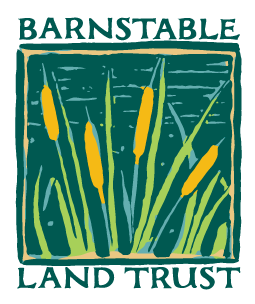The Arrival of Spring
Spring on Cape Cod is an elusive proposition at best. Some would describe it as a mirage, a distant hope, or just plain old wishful thinking. Even the first small flowers that emerge in March can easily be buried in snow from a surprise nor’easter.
While most people look for signs of spring in their gardens and lawns, such as emerging crocuses, daffodils, and tulips, I prefer scouring the local woodlands and conservation lands for the tell-tale images of spring. One of the first plants to emerge is the skunk cabbage (Symplocarpus foetidus), a yellowish-green species along the edges of wetlands that lives up to its name with a distinct and unpleasant odor that evolved to attract flies for pollination.
As I travelled down the woodland trail around Crocker Neck in Cotuit, I looked for other signs of spring. It wasn’t long before I had several companions, namely a few tiny spring azure butterflies (Celastrina ladon) swarming around my legs. These bright blue, one inch long butterflies are among the first to appear in spring.
Soon my attention was drawn to an open area along the edge of the trail where I found several spring wildflowers with their characteristic white color and growing before the surrounding trees unfolded their leaves. This included the Massachusetts state flower, the mayflower or trailing arbutus (Epigaea repens), with their pinkish white flowers and leathery evergreen leaves. This was growing abundantly along the banks of the trail. Flowering nearby was the Canada mayflower (Maianthemum canadense) with its white flowers looking very much like the garden variety of lily-of-the-valley, hence its other common name of false lily-of-the-valley.
However, my favorite early spring woodland wildflower is the star flower (Trientalis borealis). This small plant is aptly named as both the leaves and flowers appear in whorls. Like the other spring woodland species, they grow in dense colonies in the open woodland areas. You need to keep an eye out in May to spot them, for once the forest canopy of leaves form, the flowers will disappear.
The flower that draws the most attention is the pink lady's slipper (Cypripedium acaule), an orchid of great renown in these parts. The orchids are the largest family of flowering plants on earth, but are mainly located in the tropics. And so the lady's slipper here takes on special meaning in the Cape's environment. Everyone has heard that one should not pick the flower. This would result in the removal of the pollen which is picked up by bees as they fly from plant to plant to pollinate. Nor should one attempt to transplant this species as its roots have a symbiotic relationship with a soil fungus that would be severed during that operation and kill the plant.
Instead, this plant deserves your admiration for its attractiveness, and its large lip or labellum that provides a pinkish hue in contrast to the green and brown texture of the woods. At Crocker Neck the pink lady's slipper is quite common. Some of the plants hug the edges of the trail while others are sprinkled in open areas surrounded by pitch pines.
Also in these open woody areas is another spring wildflower that can confuse the casual observer - wild sarsaparilla (Aralia nudicaulis). The compound leaf appears to have three leaflets very much like poison ivy which is also appearing around this time. However, further down on the stalk are two more opposite leaflets, and underneath this are the clusters of greenish-white, ball-shaped flowers. The leaves often cover these so you may need to part them to see the flowers.
There is a small freshwater swamp in the area that is populated by several trees and shrubs including the red maple (Acer rubrum). Tiny, reddish flowers form before the toothed leaves appear and is one of the first trees to blossom in spring. In some areas the red maple competes for space with the Atlantic white cedar (Chamaecyparis thyoides). A season of heavy precipitation favors the cedars.
Events seem to be progressing more slowly in the nearby salt marsh. No signs yet of new cordgrass (Spartina alterniflora) shoots. And the numerous fiddler crabs are not yet visible. We need some sun and warmth before these common crustaceans emerge. On a hot summer day at low tide it's difficult to walk here because of the enormous fiddler crab population. Yet I see that the ospreys have returned from their winter homes. I see a pair here fishing and their aerial presence offers hope that conditions will change soon.
The Barnstable Land Trust maintains several properties throughout the town that can be explored this time of the year for the species mentioned in this article and many more. Part of the fun in doing that is to observe the changing seasons and to see new life cycles begin anew.



